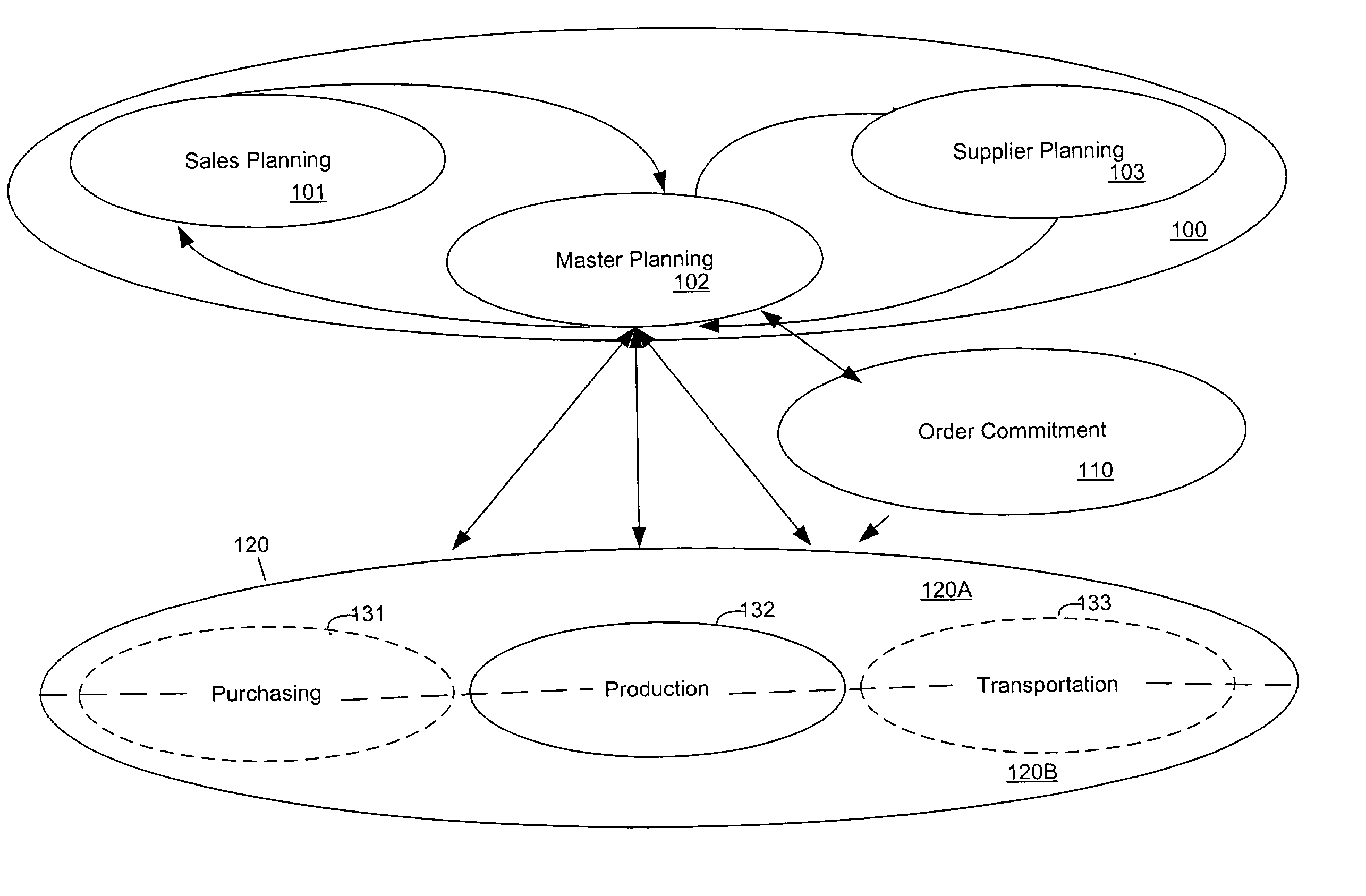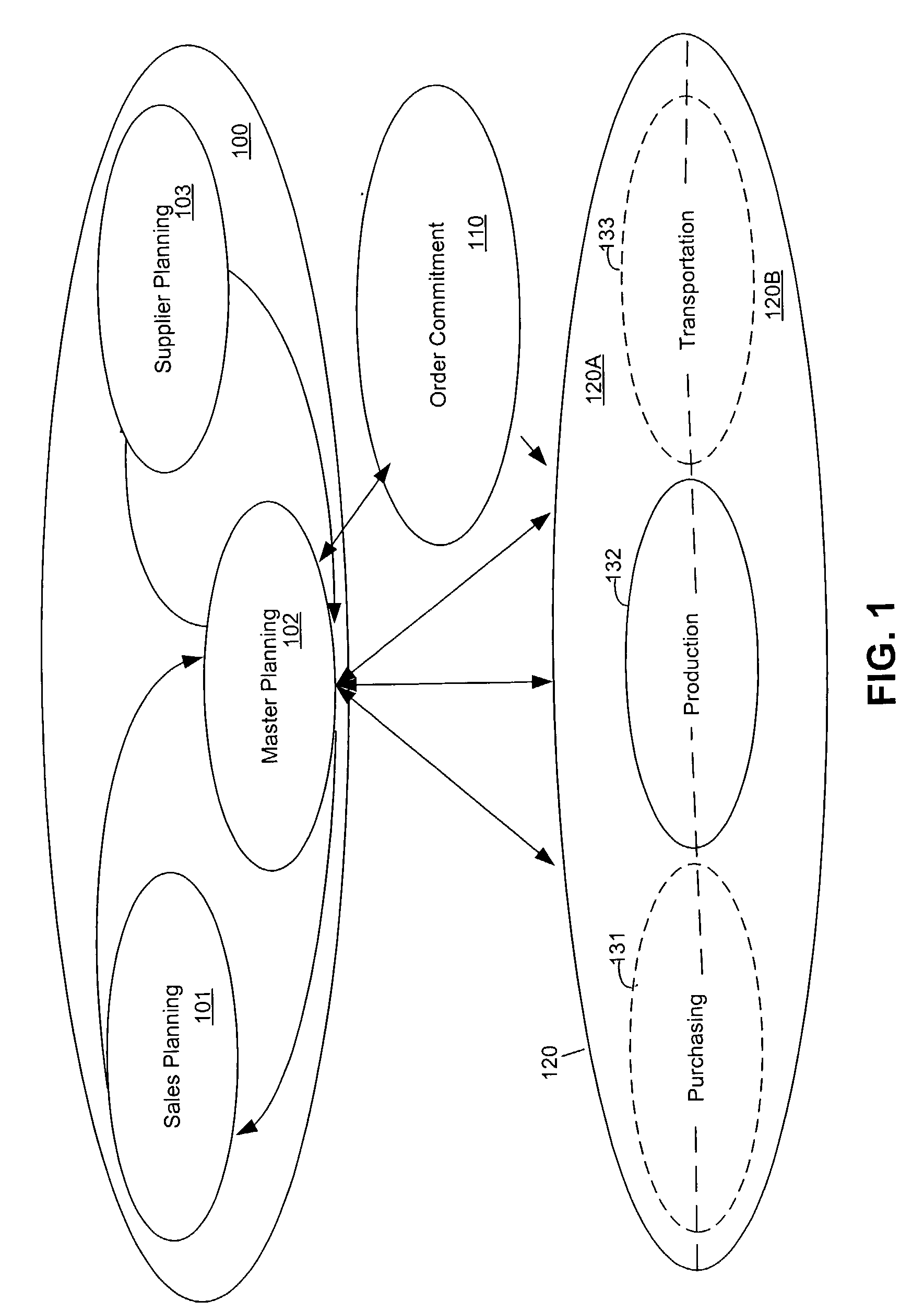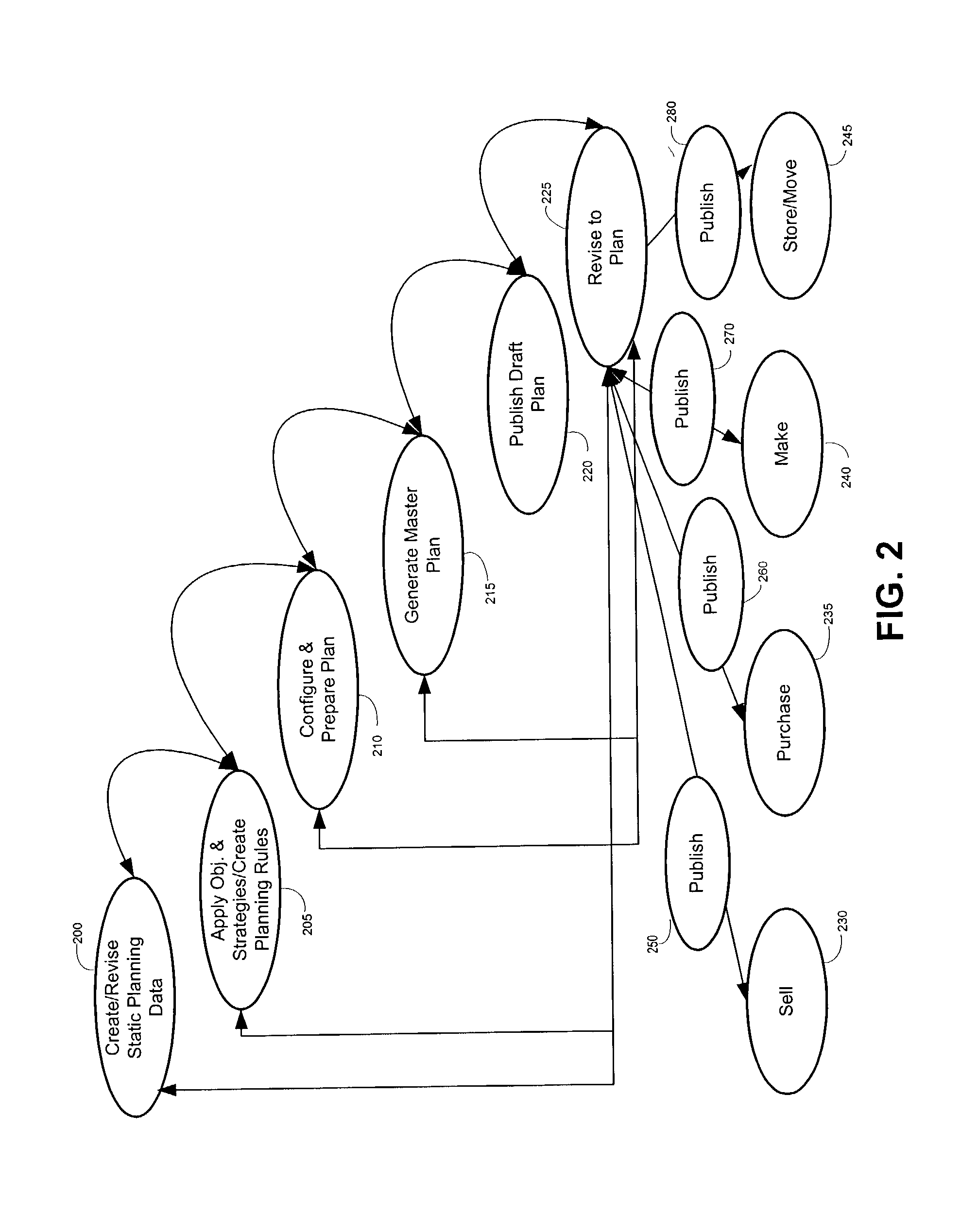Optimizing resource plans
a resource plan and resource technology, applied in the field of optimizing resource plans, can solve the problems of significant errors, undesirable delays, and difficulty in effectively applying such business strategies to devise plans to effectively utilize constrained resources to meet forecast or customer demands
- Summary
- Abstract
- Description
- Claims
- Application Information
AI Technical Summary
Benefits of technology
Problems solved by technology
Method used
Image
Examples
example 2
More Than One Supply Order, Supply Exceeds Demand
[0157] In this example it is assumed that there are four demand orders, for quantities 200, 300, 400 and 600, respectively and two supply orders, one for quantity 1000 and another for quantity 1000. Tables 21 and 22 show the order pegs before and after multiple-supply-order repegging. In this example, each demand gets half of its supply from supply order 1, and half of its supply from supply order 2. The excess supply in this example is not redistributed, but may be redistributed later using, for example, the excess-supply-repegging logic. The pegs on each demand sums to the demand quantity.
23TABLE 20 Dmd Supply PeggedQty 1 1 200 1 2 0 2 1 300 2 2 0 3 1 400 3 2 0 4 1 100 4 2 500
[0158]
24TABLE 22 Dmd Supply PeggedQty 1 1 100 1 2 100 2 1 150 2 2 150 3 1 200 3 2 200 4 1 300 4 2 300
example 3
More Than One Supply Order, Demand Exceeds Supply, Spread Undersupply Evenly or Proportionally
[0159] In this example, it is assumed that there are four demand orders, for quantities 200, 300, 400 and 600, respectively, and two supply orders, one for quantity 500 and one for quantity 300. Tables 23 and 24 show the order pegs before and after multiple-supply-order repegging, respectively. In this example, each demand has 800 / 1500=53.33% of its demand satisfied and gets 5 / 8 of its supply from supply order 1, and 3 / 8 of its supply from supply order 2. The undersupply in this example is spread proportionally. If the rule is to spread undersupply evenly, the undersupply may be correctly redistributed later using, for example, the undersupply repegging logic.
25TABLE 23 Dmd Supply PeggedQty 1 1 200 1 2 0 2 1 300 2 2 0 3 1 0 3 2 300 4 1 0 4 2 0
[0160]
26TABLE 24 Dmd Supply PeggedQty 1 1 66.67 1 2 40 2 1 100 2 2 60 3 1 133.33 3 2 80 4 1 200 4 2 120
example 4
More Than One Supply Order, Demand Exceeds Supply, Spread Undersupply By Calculated Priority
[0161] In this example, it is assumed that there are four demand orders, for quantities 200, 300, 400 and 600, respectively, and two supply orders, one for quantity 500 and one for quantity 300. Tables 25 and 26 show the order pegs before and after multiple-supply-order repegging, respectively.
[0162] In the logic described above, repegging of multiple supply orders are based on the aggregate SKU demands, not on the lower-level SKU demands. If some of the lower-level SKU demands are satisfied through inventory or scheduled supplies of the lower-level SKU, then the aggregate SKU demands may not have the same quantities as the lower-level SKU demands.
27TABLE 25 Dmd Supply PeggedQty 1 1 200 1 2 0 2 1 300 2 2 0 3 1 0 3 2 300
[0163]
28TABLE 26 Dmd Supply PeggedQty 1 1 125 1 2 75 2 1 187.5 2 2 112.5 3 1 187.5 3 2 112.5
[0164] Next, the case in which supply exceeds demand is examined. Supply may exceed ...
PUM
 Login to View More
Login to View More Abstract
Description
Claims
Application Information
 Login to View More
Login to View More - R&D
- Intellectual Property
- Life Sciences
- Materials
- Tech Scout
- Unparalleled Data Quality
- Higher Quality Content
- 60% Fewer Hallucinations
Browse by: Latest US Patents, China's latest patents, Technical Efficacy Thesaurus, Application Domain, Technology Topic, Popular Technical Reports.
© 2025 PatSnap. All rights reserved.Legal|Privacy policy|Modern Slavery Act Transparency Statement|Sitemap|About US| Contact US: help@patsnap.com



